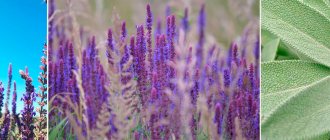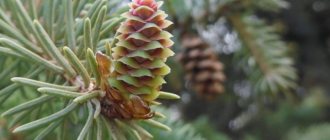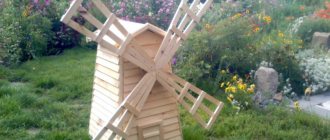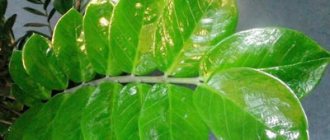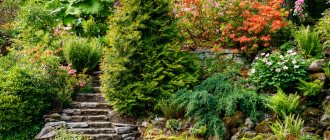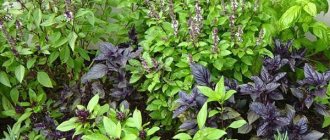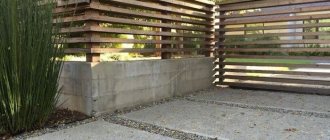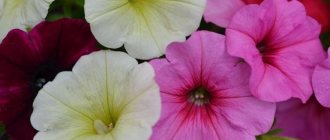Just a couple of decades ago it was difficult to get even the simplest varieties of ornamental plants, and clematis or varietal daylily were the ultimate dream. Now there is an abundance in garden stores. Our gardens are filled with bright colors and full of lush flower beds. But saturated colors need to be “diluted” with plants that are neutral in color, otherwise no composition will make an impression. That is why the fashion for ornamental grasses, ferns and, of course, wormwood, which are just entering our gardens, arose.
By the way, the easiest way to propagate wormwood is vegetatively - by division. This can be done both in spring and autumn. Most wormwoods also reproduce well from cuttings: the optimal time for this is the beginning of June.
Unity of Dissimilars
Among wormwood there are annual, biennial and perennial plants, there are both herbs and shrubs. Despite the fact that they belong to the Aster family, their flowers cannot boast of being particularly decorative: small, inexpressive, collected in tiny inflorescences-baskets. But the leaves are the real highlight of this plant. In some species they are silvery, sometimes even blue in color. The shape of the leaves is also very diverse, which can be either whole or dissected. In addition, wormwood foliage smells pleasant.
Recipes for various diseases
1. Cold.
An oil infusion of wormwood is used to treat colds. The pottery should be filled with leaves and flowers of the plant and poured with olive oil. Place the container with the composition in a cool, dark place for ten days, then strain. The readiness of the product is determined by its color: it should turn dark green. You need to take the resulting oil one teaspoon at a time. Indications for use are influenza, sore throat, ARVI.
2. Gastrointestinal diseases.
Wormwood tea is useful for treating such diseases. To prepare it, you need to take one tablespoon of a dry mixture of leaves and flowers and pour a glass of boiling water over it. The tea is brewed for fifteen minutes and should be drunk four times a day. This tea serves as an excellent immunostimulant and is useful in winter. Tea made from wormwood and yarrow is useful to restore appetite. To prepare it, you need to take half a tablespoon of both components and pour a glass of boiling water. You need to drink half a glass of tea three times a day on an empty stomach for a week.
3. Worms.
To prepare anthelmintic tea, you need to mix dry wormwood and cloves in equal quantities. You need to take 1 tsp in the morning and evening. powder with carrot juice. Wormwood removes the worms themselves, and cloves destroy their larvae. The course of treatment is ten days.
4. Skin diseases.
You need to take a dark plastic container, pour dried flowers of the tree of God into it and fill it with olive oil. The dark color of the cookware is necessary to prevent light from reaching the oil. The container must be sealed and left in a dark place for two weeks. The resulting product should be taken one teaspoon three times a day on an empty stomach.
5. Oncology.
Lady's tree tincture is effective in treating cancer in the early stages. The root of the plant is used to prepare the medicine. The dry, finely chopped root should be filled with water and boiled for ten minutes in a closed saucepan. After this, the infusion must be removed from the heat and allowed to cool without removing the lid. Tightness must be observed to prevent the essential aroma and oils from evaporating. You need to take two tablespoons of this infusion before meals. The course of treatment is two weeks, after which it is necessary to take a month break.
6. Menstrual irregularities.
Fresh leaves must be poured with boiling water and left for thirty minutes. As soon as your period begins, you need to take two tablespoons of the infusion three times a day. Within three months, the pain decreases significantly, and the cycle becomes more regular.
Competitive selection
Let's get acquainted with the assortment of wormwood, which are resistant to the climate of central Russia, do not require special conditions and are highly decorative.
Wormwood Pursha
Wormwood Pursha. Photo: Alexander Kabanov
This is a pretty plant up to 60 cm high with elongated whole leaves. Due to their pubescence they have a silvery color. This wormwood can always be trimmed, giving it a more regular shape, since it tolerates this procedure painlessly.
It grows actively due to long rhizomes.
Steller's Wormwood
It has openwork cut leaves of a grayish-white color, which can persist in winter. Although this species is not tall (usually does not exceed 20–30 cm), its stems are lodging.
It has long rhizomes, due to which a loose clump is quickly formed.
Wormwood Schmidt
Artemisia Schmidt 'Nana'. Photo: Alexander Kabanov
Article on the topic
The color of a noble metal. Decorate your garden with silver foliage plants
Forms compact, dense bushes of round shape. The species is quite compact: its height does not exceed 30 cm. The foliage of this wormwood is even more elegant due to its strong dissection - each leaf consists of many thread-like lobes. Their silvery-green color is also interesting.
The 'Nana' variety is suitable even for the smallest gardens: its height does not exceed 15–20 cm.
Artemisia pontica
A plant with graceful pinnately dissected leaves with light silvery pubescence. This species is quite tall - up to 100 cm.
It grows actively, eventually forming large thickets.
Wormwood Louis
Wormwood Louis 'Siver Queen'. Photo: Alexander Kabanov
Interesting wormwood with a characteristic appearance. Its height usually does not exceed 60–80 cm. A distinctive feature is elongated silver-gray whole leaves with teeth at the top. In addition to the natural appearance, there are also varieties that differ in the size of the leaf blade, as well as the location and size of the denticles on the leaf. For example, the 'Valeri Finning' variety has few cloves, so overall the plant has a more austere appearance. 'Siver Queen' looks completely different with more elongated leaves (and the teeth on them are more clearly defined). This openwork variety fully lives up to its name - 'Silver Queen'.
Lophanthus anisatus
Syn.: fennel hyssop, fennel hyssop, fennel lofant, anise hyssop, anise hyssop, giant fennel hyssop, dill hyssop, dill hyssop, Mexican mint, northern ginseng.
Anise lofant is better known throughout the world as fennel polygonum. This is a perennial herbaceous plant reaching a height of half a meter. Purple or dark pink lofant flowers, collected at the tops in dense spike-shaped inflorescences, emit a strong, pleasant aroma.
In medicine
Lofant anise is not a pharmacopoeial plant, is not listed in the State Register of Medicines of the Russian Federation and is not used in official medicine. However, in search of new sources of therapeutic and prophylactic raw materials, scientists have conducted a number of studies on the isolation and study of biologically active compounds of fennel plant. It has been proven that the plant has bactericidal, fungicidal, immunostimulating and antioxidant effects and can be used in the treatment of diseases of the upper respiratory tract, genitourinary system, fungal infections, gastrointestinal disorders, and also as a general tonic.
Contraindications and side effects
Anise lofant has no contraindications, but pregnant, lactating and children should not use it.
In gardening
Gardeners readily grow aniseed lofant. Decorative and fragrant, it is able to decorate a flower garden, border, border, bed with aromatic plants. Lofant blooms from mid-June until the first frost. Its “spikelets” can be either purple or various shades of pink and even white; in large quantities they form a picturesque carpet, similar to lavender.
In cooking
In cooking, anise lofant is used in the same way as similar spicy-aromatic plants with lemon notes in the aroma - anise, fennel, lemon balm. Fresh and dried lofant is used to season fish and vegetable dishes, baked goods, and is used in canning and making preserves, jellies, jelly, and compotes. The leaves of the plant flavor vegetable and fruit salads, puddings, and mousses. Fragrant teas are prepared from the anise lofant herb.
In other areas
In cosmetology
The bactericidal and antioxidant properties of the plant and its pleasant smell have found application in cosmetology. Lofant anise essential oil is used as a fragrance in the production of toothpastes, soaps, and shower gels. The plant is added to shampoos, conditioners and hair masks, as it stimulates hair growth and strengthens roots. In creams, masks and tonics for facial skin, lofant acts as a tonic, rejuvenating and regenerating agent.
In beekeeping
The scent of lofanta attracts beneficial insects, including bumblebees and bees. The plant is a good honey plant with high productivity; its nectar produces delicious honey with a light, pleasant aroma. As a honey plant, lofant has another valuable advantage - the plant, unlike many others, produces nectar in any weather.
On the farm
Since lofant is rich in fiber and proteins, it is also used as a forage plant.
Wormwood
Wormwood.
Photo: Alexander Kabanov Tall (up to 120 cm) plant with large pinnately dissected silvery-green leaves. This wormwood is absolutely unpretentious and quickly forms large clumps. For a long time, due attention was not paid to its decorative properties, considering it, at best, a medicinal plant, and at worst, an ordinary weed. But it is this wormwood that is especially good in the form of a large tapeworm against the background of a lawn; it also has a place in the now fashionable natural gardens.
Common wormwood, or Chernobyl
Article on the topic
Wormwood: properties, benefits and medicinal uses
It is not particularly decorative: it is really a weed, which is also difficult to get rid of - its root system is too powerful, and self-seeding is very abundant. In addition, Chernobyl is too tall - up to 200 cm. But on the basis of this species, a wonderful golden variety 'Janlim' was obtained, especially spectacular in the spring (in the summer the color noticeably fades). The advantage of both the species and the variety is complete stability, which is very important in our difficult climate.
Reproduction and planting
Wormwood can be propagated by seeds. The plant reproduces itself by rhizomes. In spring, its shoots may appear quite far from the planted specimen. To limit growth in a flowerbed, it is worth planting the plant in a large pot without a bottom buried in the soil. It will have a place to grow, but it will not threaten other plants.
Wormwood is often propagated vegetatively:
- green or semi-lignified cuttings;
- division.
Seeds
It is interesting that in our climatic conditions wormwood does not have time to set fruit. This means that collecting seeds is almost impossible. Seeds can be purchased, but germination takes a long time.
Wormwood seeds need light to germinate, so they are scattered freely over the surface and lightly pressed to avoid being blown away by the wind. After about 10-21 days, the first cotyledons appear. When sowing wormwood in the ground, you should ensure that the distance between plants is at least 25 cm.
Cuttings
Most often, wormwood is propagated by cuttings. Use 10 cm cuttings:
- green cuttings are cut in June;
- semi-lignified - in September from shoots of this year on a plant older than 3 years of age.
The cuttings need to be dipped in a rooting preparation, placed in a pot with peat and sand, and covered with perforated film. The time for germination and development of plant roots can be several months. Rooted cuttings need to be hardened gradually, and in the spring, when the threat of frost has passed, they can be transplanted into open ground.
Fragrant "modest"
Separately, it is worth mentioning another type of wormwood - tarragon. It is not particularly beautiful, but if you grow not only ornamental but also useful plants, this species is definitely worth having. The drink “Tarragon” is made on its basis. In addition, the shoots and leaves of this wormwood can be added to various dishes to give them a unique spicy aroma.
Tarragon is more capricious than other wormwoods. Warm, damp winters are especially dangerous for it - the plants can dry out.
Use in garden landscape design
It is widely used in landscape design and design of parks and garden beds. The silver bush creates a very beautiful composition in the vicinity of other garden inhabitants, while its aroma successfully repels all kinds of flower pests. Such a plant on the site will not only bring aesthetic pleasure to the gardener, but will also be incredibly useful.
Low-growing plant varieties are usually used in the design of alpine slides and borders. The Louis variety goes well with low bells, barberry, cloves or sage. High varieties go well with roses.
Many or few?
Not all wormwoods can boast of being decorative, although most species (and there are several hundred of them) have leaves that are quite attractive. In Western Europe and the USA, more than 50 species are used to decorate gardens, and various varieties have been obtained from some of them. Our range of these plants is noticeably more modest. There are several reasons for this. Firstly, not all wormwood can be grown on ordinary garden soils - some require special conditions. For example, mountain species grow successfully only on special raised ridges or retaining walls: with such planting, plants do not have problems with damping off. Secondly, the demand for these plants among our gardeners is still insufficient, although, most likely, this is temporary.
Article on the topic
Procurement of medicinal plants. What herbs can be useful in winter?
Growing and care
Wormwood is a very unpretentious plant that requires minimal care - watering, sometimes pruning, optional fertilizer. There is no need to care for wormwood in the fall, the plants are winter-hardy, grow well in the Moscow region, the Middle Zone and colder regions; they do not need to be covered for the winter.
Trimming
Collecting grass requires cutting the entire plant, and this is very good, because trimming the lower parts of the plant makes the bush more beautiful - it is carried out annually. Medicinal wormwood is pruned during flowering (summer).
Watering, fertilizer
Regular feeding of wormwood is an important stage of care. It is better to use compost or vermicompost from Californian earthworms; thanks to them, the substrate will acquire a better structure. For feeding, you can use manure, which must be mixed with the soil before sowing. For ordinary garden soil without fertilizers, a dose of compost or a small amount of mineral complex fertilizer is sufficient.
Compared to other plants, wormwood needs little water. You shouldn't water it every day. Constant substrate moisture is just as harmful as stagnant water.
Although the plant does not like moisture, on hot and dry days wormwood should be watered once every 2 days. Drooping leaves are a sign of need for water. As a rule, the plant quickly revives after watering.
Problems in growing
Wormwood is not resistant to some types of pests. Its leaves can be affected by aphids, blood aphids.
Although the plant is very resistant to frost, it is recommended to protect it from strong winds.
Inner Circle
Wormwoods are excellent plants for a fragrant garden. If you add thyme, angustifolia lavender, sage, Fassin's catnip and monarda to them, you can create an amazing flower garden, where the grace of the leaves and the nobility of color will complement the spicy steppe aromas. In addition, all these plants have common growing conditions.
Wormwood is also good in a gravel garden or rock garden, where wormwood adds delicacy to brutal compositions of stone and compact coniferous plants.
Wormwoods also go well with cereals, but as partners for them you need to select the least moisture-loving species: soddy pike, which can grow in both dry and wet soils, giant grate, evergreen oatmeal and gray fescue.
There is always a place for wormwood in classic flower beds, where it will successfully dilute the “flashy” plantings of peonies, irises or daylilies.
Echinacea. What is Echinacea?
What is Echinacea and what is it used for? Echinacea is a native North American coneflower. It was discovered and used as a traditional herbal medicine for over 400 years by the Native American tribes of the Great Plains. Technically classified as a herb. Several species of the Echinacea plant are used to make medicine from its flowers, leaves and roots.
Before 1950 and the introduction of antibiotics, Echinacea had a decent medical status. As the healthcare industry has changed, antibiotics have become fashionable, and now the famous herb has lost much of its respect.
It has become a popular plant to grow. Echinacea, also called Echinacea purpurea, commonly known as pale purple coneflower. It is a favorite of gardeners and butterfly lovers. An attractive flower reminiscent of daisies with mounded heads and pink or purple petals. It grows on strong stems far above the foliage.
Most people don't realize that the chemicals found in the root are significantly different from the chemicals at the top of the plant. If we analyze the roots, we see that they contain high concentrations of volatile oils. While the parts growing above the soil tend to contain more polysaccharides. They are known to trigger immune function. Echinacea extract is essentially a tincture of this upper part of the plant.
Many of the chemical components of echinacea are potent immune system stimulants and can provide significant therapeutic value. Some of them are probably familiar to you - essential oils, flavonoids, inulin, polysaccharides and vitamin C.
The University of Maryland Medical Center also reports that the part of the plant that grows above ground is most effective. Interestingly, in Germany, dietary herbs are regulated by the government. And the aerial parts of Echinacea purpurea are actually approved as natural remedies for treating urinary tract infections. As well as upper respiratory tract infections, colds and slow-healing wounds.
Weed compost
Weeds can be used to make environmentally friendly compost. And to make it ripen faster, you can prepare a microbiological cocktail that will help you get ready-made compost in just a few days.
Microbiological cocktail recipe:
The prepared solution should be used as soon as possible, because 30 minutes after the mixture ceases to be saturated with oxygen, aerobic bacteria will begin to die. This solution can also be used to feed growing seedlings.
To prepare compost on a site, away from buildings and plantings, in partial shade, it is necessary to fence off a small plot of land. All weeds must be stored in this place. When a sufficient number of dried plants have accumulated, they are mixed with a pitchfork, chopped with a shovel, watered with a microbiological cocktail and covered with polyethylene.
Chemical composition
The benefits of the plant and its use in medicine are due to the medicinal chemical composition of the plant. For treatment, the outer part of the plant is used, including inflorescences and leaves, which contain components such as:
- glycosides;
- flavonoids;
- tannins;
- essential oils;
- phytoncides;
- alkaloids;
- capillin;
- ascorbic acid, B vitamins and provitamin A;
- malic and succinic acid;
- carotene;
- saponins.
The individual parts of the plant also contain various minerals and trace elements. The substances that wormwood contains determine the use of wormwood to treat many diseases.
